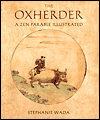
Ox Herder: A Zen Parable Illustrated
by Stephanie Wada, Gen P. Sakamoto, Kuoan Shi Niu Tu Song
Publisher: George Braziller Publishers (ISBN #: 0807615110, Hardcover, 85pp, January 2002)
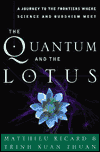
The Quantum and the Lotus: A Journey to the Frontiers Where Science and Buddhism Meet
by Matthieu Ricard, Trinh Xuan Thuan
Publisher: Crown Publishing Group (ISBN #: 0609608541, Hardcover, 320 pp, December 2001)
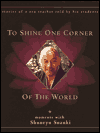
To Shine One Corner of the World: Moments with Shunryu Suzuki
by Students of Shunryu Suzuki, David Chadwick (Editor)
Publisher: Broadway Books (ISBN #: 0767906519, Hardcover, 144pp, March 2001)
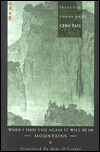
Poetry: When I Find You Again, It Will Be in the Mountains: The Selected Poems of Chia Tao
by Chia Tao; Mike O'Connor (translator)
Publisher: Wisdom Publications (ISBN #: 0861711726, Paperback, 224pp, November 1999)
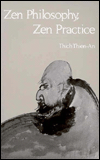
Zen Philosophy, Zen Practice
by Thich Thien An
Publisher: Dharma Publishing (ISBN #: 091354633X, Paperback, 192 pp, November 1989)
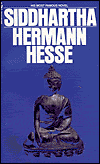
Siddhartha
by Hermann Hesse
Publisher: Bantam (ISBN #: 0553208845, Paperback, 160pp, December 1981)
|
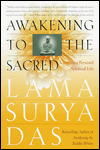 by Lama Surya Das
by Lama Surya Das
Publisher: Broadway Books (ISBN #: 0767902750, Paperback, 400 pp, May 2000)
» BUY THIS BOOK
» Submit a review

ZENGUIDE.COM REVIEW - Rating: 4/5
If the lotus flower is a symbol for Buddhism, then the one for Tibetan Buddhism or Mysticism should be a night lotus. This lotus has been opening under the vast, dream-like, and mysterious moonlight on the high land in the Far East for centuries. It is said that each of its petals carry a different kind of mandalas, mudaras and mantras. Yet only selected beings are allowed to learn and practice it under a celestial teacher and thereafter achieve Buddhahood. They then could liberate themselves and help other beings if they like. Otherwise they would go to see their Great Patriarch Padmasambhava (Lotus Born) in the Land of Buddhas.
These secret teachings were the seven times sealed esoteric teachings which Padma- sambhava had brought with him from India to Tibet in the 8th century. He secretly transmitted them to those whom he knew deserved them. Anyone who stole these teachings and did not deserve them committed blaspheme. These secret oral teachings were put down in a book, which has been a sacred one to the Tibetan people from the 14th century. This book has been called the "Bardo Thodol" (lit. Liberation through Hearing in the In-Between States). It used to be read beside the body of the dead. When the soul hears and comprehends the meaning of the book's words, it may awaken itself to liberation, according the Tibetan tradition. However, about a half-century ago, the everlasting seal of the book was broken and its secret teachings were revealed to the world through English translation by Lama Kazi Dawa Samdup and W.Y. Evens-Wentz. The people in the West now have their chance to study, practice, and enter the world of spirituality of Tibetan Buddhism (Carl Jung, Lama Anagarika Govinda, in this case). A version of Buddhist meditation could be found in the "Bardo Thodol". This year, another version of Buddhist meditation, which is no less important than that of the "Bardo Thodol", can be found in a book called "AWAKENING TO THE SACRED" by Lama Sunrya Das. Lama Sunrya Das was born in New York and highly trained in the Tibetan tradition of Buddhism. In this book, Lama Sunrya Das reveals another one of the highest esoteric Buddhist teachings: Dzogchen (lit. great perfection), also known as Ati-yoga (extraordinary yoga), or Natural Meditation. As Lama Surya Das made it simple, it was also brought to Tibet by Padmasambhava and Vimalamitra and then synthesized into a unified system by Longchenpa in the 14th century. It is a very interesting art of meditation. This meditation is very easy for people to practice and they will experience a lot of joy when they do it. If you like to enjoy your life naturally as a poet, a painter, or a singer; this art of meditation will help you as much as you want at any time and anywhere. As the author says in his book, you can lie down and rest on green grass area under a blue sky, a starry sky, a moonlight sky, or a totally dark sky and gaze at them with awareness. This is one of the ways of natural meditation. This way you can release your mind or your soul to fly up to the moon, stars, clouds, or whatever you like. And if you want, you can make a poem, such as a haiku. Or you can paint a picture yourself. Just relax and enjoy it, enjoy your life, and enjoy yourself. Is this a wonderful meditation? It is really easy, isn't it? Like the author, through this way of meditation, you can reach your original nature or your Buddha-nature, i.e. you can become enlightened. I am very sure you will be at least an artist as soon as you start practicing! Try it and see how it works for you. This type of meditation is what we need in order to remove our boredom and restlessness, to heal our "sickness" or "diseases", to get out of the "confinement", and to save ourselves from "dying", which we all have in our daily lives. One thing to remember is that an enlightened one may be a poet or a painter, but the vice versa is not necessarily the same. Besides the Dzogchen, the book also deals with a lot of other subjects and other ways of meditation or mindfulness which you can do in your everyday life. Such as dreaming, eating, chanting, walking, gardening, driving, rowing a boat, riding a bus or a horse, or feeding birds_It says that every chance you might have is a good one for you to meditate. It seems that the author tried to relate as many ideas as he could to other literatures, thoughts, philosophies, religions, even sciences like mental therapy, psychology and psychoanalysis, or whatever he can use to make things clear.
In short, the contents of the book are much like a feast where alot of prepared, delicious food invites anyone who likes to enjoy it. In other words, therein, alot of dharma-gates are shown for everyone who likes to enter, to be home and get his or her own awards. There is one thing which the author did not mention in this book (or I missed it). Through one of these methods of meditation, when a practitioner has done it well, how does he know whether his enlightenment is true or not? And does he need a master who can make sure it is a real and authentic realization for him? This is required in Zen tradition and very important in Buddhism. If not, it is not considered to be Buddhist enlightenment. I really don't know if Tibetan Buddhism has this kind of certification or not. Maybe the book is exclusively for beginners and that is why the author did not mention it.
Layman ChonTri
SUBMIT YOUR BOOK FOR REVIEW
If you would like to have your book reviewed by Zen Guide, please send a copy of your book to:
Chon Tri - Book Review
1328 Peachtree Court
Frederick, MD 21703
USA
|















 ZEN FANS I
ZEN FANS I






